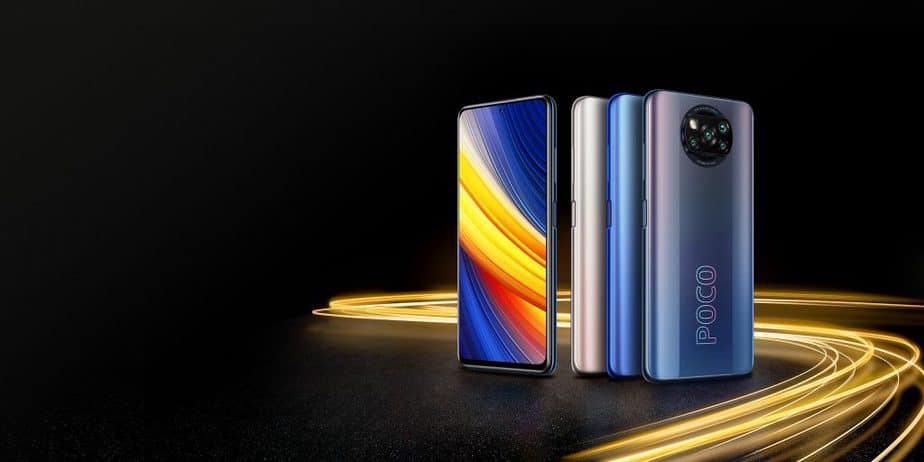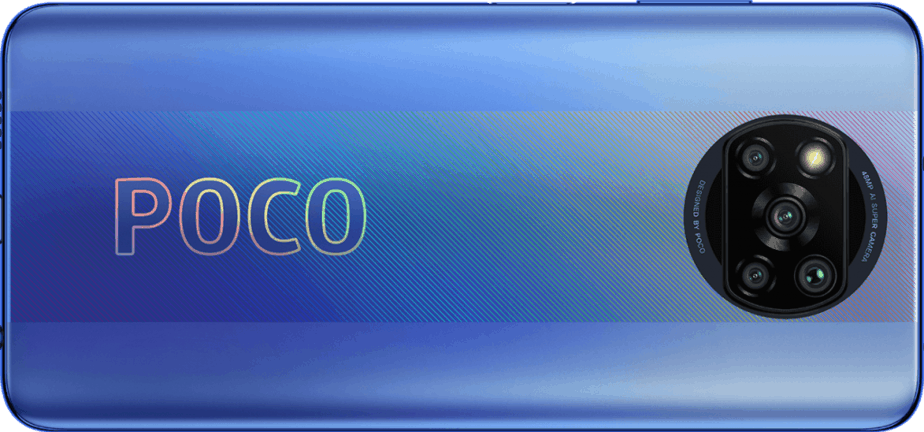
Poco X3 Pro Review | Is it the Best Mid-Ranger?
Share
I was wondering what was the deal with Poco phones from Xiaomi not offering top-tier performance since that was the reason the sub-brand was created. And now we have one: the Poco X3 Pro. It aims to deliver the best performance in a congested midrange smartphone market. Check out our Poco X3 Pro Review for all the details.
Related: Check out out list of the Best Xiaomi Phones!
With specs that could rival flagship phones more, the Poco X3 Pro is aiming to get a stronghold on the midrange market. Let's see if the technical specs could translate to an excellent user experience. Here's the Poco X3 Pro Review.
After having reviewed the Poco X3 Pro based on various factors like design, display, performance, function, features, price and much more; my team and I found that:
The Poco X3 Pro is a decent mid-range phone and is definitely at the top. However, it doesn't come close to other mid-range models like the Redmi K40. Of course, that doesn't mean that the Poco X3 Pro doesn't offer a good experience. It comes with a 6.67-inch LCD Full HD+ display with a 120Hz refresh rate and a powerful Qualcomm Snapdragon 860Adreno 640 GPU.
Related: Check out our list of the Various Types of Xiaomi Phones!
Poco X3 Pro Review

Specifications
| Display | 6.67-inch IPS LCD Full HD+ resolution120Hz refresh rate |
| Processor | Qualcomm Snapdragon 860Adreno 640 GPU |
| RAM & Storage | 6GB LPDDR4X + 128GB UFS 3.18GB + 256GBUp to 1TB microSD |
| Battery & Charging | 5160mAh |
| Security | Side-mounted fingerprint scanner |
| Rear Camera(s) | 48MP main sensor8MP Ultra-Wide sensor2MP macro sensor2MP depth sensor |
| Front Camera(s) | 20MP |
| Port(s) | USB Type-C3.5mm headphone jack |
| Audio | Dual speakersHi-Res audio certified |
| Connectivity | Bluetooth 5Wi-Fi 5NFCIR Blaster |
| Software | MIUI 12 based on Android 11 |
Related: Xiaomi Poco X3 vs Poco F3
Design and Build

At first glance, the Poco X3 Pro looks weirdly similar to the Poco X3 because Xiaomi is using the same design. There is no change in the design from its predecessor, everything’s the same. Check out our Poco X3 Pro Review for all the details.
This is not a bad thing for users who liked the Poco X3 design. I know people who loved the design and who ended up owning the Poco X3. But to be honest, I don’t like the design of the Poco X3 before or the Poco X3 Pro now.
The huge circular camera island looks obnoxious in my opinion. This coupled with the large Poco branding dual color tone of the phone doesn’t appeal to my taste. I like minimalistic designs and the Poco X3 Pro is the opposite of minimalism.
For anyone, who hasn’t seen or used the Poco X3, here’s the breakdown of the Poco X3 Pro’s design. On the front, it is pretty much all screen, except for the bottom chin and the hole punch for the selfie camera.
My complaints are about the back, the Poco X3 Pro’s back is made from plastic, which itself is not bad, as plastic is more durable. I don’t like the Poco branding or the camera island or the two-tone color scheme.
Besides that, the power and volume buttons are on the right side and they feel good and durable to press on. The power button also doubles as the fingerprint reader. I am a huge fan of side-mounted fingerprint readers as they are ergonomic and fast, and the same stays true for the Poco X3 Pro.
The looks of the Poco X3 Pro may not be for everyone, but it sure does feel like a durable phone, that can withstand a beating due to its plastic build. This is probably the reason Xiaomi didn’t change the design, and probably to save costs too.
Related: Why are Xiaomi Phones so cheap even with high specs
Display

The display is another area Xiaomi has gone with virtually the same display found on the regular Poco X3. It is a 6.67” Full HD screen, the underlying tech is an IPS LCD panel. Though it is the same panel from Poco X3, it is still a really good screen thanks to the 120 Hz refresh rate and bright, vivid colors.
The only difference from the regular Poco X3 is that the Pro model uses a Gorilla Glass 6 for protection, compared to the Gorilla Glass 5 on the cheaper model. The display is large, smooth, and colorful given the price tag.
So, I guess, why fix it unless it is broken, and the Poco X3 Pro’s display is far from being broken. While it's nothing amazing, it will still hold its own against its competitors. And the audience it is targeted at will love it, as most will be upgrading from an inferior 60 Hz display.
Related: Best Apps for Xiaomi Phones!
Performance
Almost all of Xiaomi’s budget to make this a new phone I guess was spent here. The design and display are the same as the Poco X3, but the internals are not. The Poco X3 Pro comes with a surprise Snapdragon 860. And for anyone wondering, the Snapdragon 8XX lineup is Qualcomm’s best of the best processors.
The Poco lineup of phones has always focused on offering the most performance at affordable prices. This is true in the case of Poco X3 Pro, the Snapdragon 860 is a souped-up Snapdragon 855+ making it one of the fastest mobile processors on the market.

On paper, this makes the Poco X3 Pro faster for almost all budget and midrange phones, and just behind the Snapdragon 888 and 865 found on 2021’s flagships. And from my testing, Poco X3 Pro devours all benchmarks and gaming tests with ease.
This coupled with its 120 Hz display makes it one of the best phones for gaming right now. This is a small handheld gaming console in my opinion and if you have a controller in hand, you can play on it for hours and have an amazing time.
The Poco X3 Pro is the best phone you can get if performance is all you need and if you are limited by budget. But the Poco X3 Pro offers more than just stellar performance.
Related: Best Xiaomi Gaming Phones!
Camera

Xiaomi hit it right out of the park in the performance and display department. Can the Poco X3 Pro also provide excellent camera performance? It sure can. I thought Xiaomi would gimp the camera on this device to cut costs or use the same cameras from the Poco X3.
To my surprise, Xiaomi changed the setup and on paper, it looks like Xiaomi gimped with smaller lenses. In practice, the camera on the Poco X3 Pro is much better than the Poco X3 and I wouldn’t have settled for less because the price is more.
Poco X3 Pro with its 48 MP main lens can shoot some very detailed, crisp, and colourful photos when it is subjected to lots of light. The dynamic range is also excellent given the price. The Poco X3 Pro is also surprisingly capable in low light situations as it offers a night mode too. The secondary 8 MP ultrawide sensor is also good for the occasional wide shots you might need it for.
My only complaint here is the macro and depth sensor, as both are underwhelming. I don’t understand why phone manufacturers strap on a poor 3rd and 4th camera when the cost of them can be used on something else. Using fewer cameras will also make the phone look much better and clean. But it is what it is, and we are stuck with them.
The main camera on the Poco X3 Pro supports up to 4K 30FPS video recording with Electronic Image Stabilization (EIS) to improve the stability and smoothness of the video. Videos from the phone look accurate, with good contrast, and are stable thanks to EIS. Audio recording also is very good given the price and hardware on offer.
The 20 MP selfie camera is detailed with good-looking colors and contrast. Portrait mode from the selfie camera is not the best but it will do for the price.
Overall, I was pleasantly surprised with the camera performance from the Poco X3 Pro. And while the lens themselves are great, I think a lot of credit should be given to the Snapdragon 860 since it does all the heavy lifting on the processing side of things.
The Poco X3 Pro’s camera will be an upgrade over almost every budget and mid-range phone from previous years. You can't go wrong with it.
Software
The Poco X3 Pro has been nothing short of impressive in every category I have tested until now. But no phone can be perfect and if it is, then there will be nothing to innovate on. And Xiaomi has to innovate on its software in my opinion.
I have never been a fan of the software on Xiaomi phones. I feel like the software is bloated and messy. I don’t like how everything is rounded and cartoony in the UI. I prefer stock android or UIs from other manufacturers. Xiaomi does offer a lot of customization options which is cool but still, they can do a lot better compared to what they have right now.
Anyone reading this should keep in mind that software, like design, is more of a subjective matter, and so what I might not like, someone might love. And if you are someone who loves Xiaomi’s MIUI, then you would love the Poco X3 Pro too.
Battery
Xiaomi has always been on top of its game when it comes to battery. And looking at the specs of the Poco X3 Pro, I am willing to bet that it will fare well in my battery tests. It comes with a large 5160mah battery with support for up to 33W charging.
In my testing, the Poco X3 Pro offered outstanding battery life. With over 11+ hours of video playback time and 17+ hours when browsing the web, the battery life was exceptional. You would be hard-pressed to kill its battery in a day unless you are gaming for hours in one sitting.
The charging speeds are also impressive as from my testing, the battery charged from 0 to 100% in under 70 mins. This is with the included 33W fast charger. But you should know that some phones in this price category come with 65W and they are faster.
Final Thoughts
There's nothing much left to conclude, the Poco X3 Pro is an excellent device. It may be the perfect device for some, with top-tier performance, excellent screen, surprisingly good cameras, long-lasting battery, and low-price tag.
The design and software might not be for everyone, but if they appeal to you, you are looking at the perfect phone you can buy right now. It should be a no-brainer if you are looking for a new phone in this price category.
Also Read: